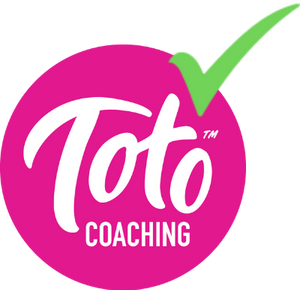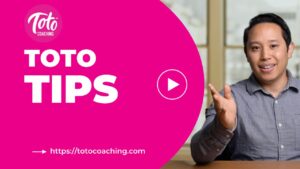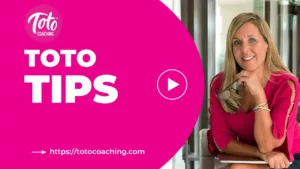Every detail matters when it comes to establishing your brand.
Watch this video or read the article below
![]()
Transcript
Why do you need a favicon?
First, a favicon helps strengthen your brand identity and it distinguishes your website from others.
Secondly, it makes it easier for users to locate your site when multiple tabs are open or when browsing bookmarks. I always have a zillion open.
Lastly, having a favicon gives your website a polished and professional appearance.
If you do not upload your own favicon, most likely there’s a default favicon that would be displayed instead. This looks very unprofessional. For example, some websites look like this because they’re using WordPress as their platform and they never change the favicon. Look at these examples. These websites did not specify a favicon, so web browsers have substituted one for them.
This is not the Toto way.
Let’s go over this a little more in detail
WHAT IS A FAVICON?
A favicon is the little icon that represents a website, making it easily recognizable in browser tabs, bookmarks, and other places online. While it’s small, a custom favicon is crucial for branding, usability, and professionalism.
What is a Favicon?
Favicon stands for “favorite icon.” It’s typically a 16×16 or 32×32 pixel icon file in .ico, .png, or .svg format. Sometimes, you may be asked to upload a favicon with dimensions of 512px x 512px! Check what your platform is requesting, and then create a favicon of that size.When you create a custom favicon, it appears next to your site’s title in browser tabs, address bars, and bookmarks. Without a custom favicon, a generic default icon is used.
Why Should You Create Your Own Favicon Title
Let’s break it down for you. First and foremost, a favicon is not just a tiny graphic; it’s a silent brand ambassador for your website. Here’s why it should be a priority :
Strengthen Brand Identity
Strengthen your brand’s visual identity with a unique favicon that sets you apart from the competition. Toto Coaching places significant importance on having a distinctive favicon as it plays a crucial role in brand recognition.
A unique favicon serves as a visual guide that instantly associates visitors with Toto Coaching. If your website has a distinct favicon, it becomes easier for visitors to identify and switch to your site quickly, even among several open tabs.
User-Friendly Navigation
Favicons guide users when navigating multiple tabs and bookmarks. If a user have a dozen tabs open, how do they find your site easily? A favicon helps visitors easily switch between your site and other tabs. This is especially important for bookmarked sites, as the favicon helps locate them easily.
See the image below. You’ll notice I have a ton of tabs open in my browser, but it’s easy to find the HubSpot tab—it’s the one that is orange with the sprocket design inside. You can also identify the Ahrefs tab—it’s the one with the orange ‘a’.

Polished and Professional Appearance
Having a favicon gives your website a polished and professional appearance. A website with a favicon demonstrates attention to detail and a level of professionalism. It shows that you’ve invested time and effort in creating a cohesive and visually pleasing online presence.For e-commerce sites, a favicon can instill customer confidence in your business.
The Consequences of Ignoring Favicons
Neglecting to include your custom favicon will result in the display of an unprofessional default icon. An example of this is observed among certain WordPress users who opt to retain the default favicon, a practice that is less than ideal.
Observe the examples below for a visual demonstration. When websites lack a designated favicon, web browsers substitute it with an unappealing default icon.
![]()
![]()
Best Practices for Designing Your Favicon
Choose the Right Size and Format
Choosing the right size and format for icons is key for ensuring they appear correctly and are recognizable across various platforms and devices.
Size (16×16 pixels and 32×32 pixels)
These are standard sizes recommended for icons, especially in contexts like favicons for websites or application icons. They are small enough to fit in various UI elements and large enough to convey the necessary details.
Ensure Simplicity
Because of the small size, it’s crucial to keep icons simple and uncluttered. Avoid complex details that may be lost when downsized.
Recognition when Downsized
Icons may be displayed at different sizes in different contexts. Ensuring recognition even when the icon is scaled down is vital for maintaining a consistent and user-friendly design.
Avoid Text
Avoid adding text to your favicon. Text might be illegible at smaller sizes and defeat the purpose of a quick, recognizable symbol.
Design Tools
When designing icons, especially for purposes like favicons, it’s important to use appropriate design tools to ensure precision and clarity. Here are more details on this, along with examples:
Adobe Photoshop
Designers can open their full logo in Photoshop, zoom in to identify a distinctive section, use tools like the crop tool or selection tools to extract it, and then resize and export the section as a favicon.
Online Tools
favicon.io: favicon.io is an online tool specifically designed for creating favicons. It allows users to upload an image and generates favicons in various sizes and formats. It’s user-friendly and streamlines the favicon creation process.Users can visit favicon.io, upload their logo, and use the online editor to select and adjust a specific area of the logo. The tool then generates favicons in different sizes and formats.
favicon-generator.org: This is another online tool dedicated to favicon generation. It simplifies the process by offering a straightforward interface and options for different icon sizes. Similar to favicon.io, users can upload their logo to favicon-generator.org, choose a section of the logo, and the tool will generate favicons suitable for various platforms.
Test and Refine
After creating and adding your favicon, it’s important to test and refine it to ensure it effectively represents your brand and is visible across different platforms.Refresh the page to see the favicon in action. Ensure it displays correctly and looks visually appealing within the context of your website. Next, you can open your website in different browsers and check the tabs to see how the favicon appears. Also, bookmark your site and verify that the favicon is clear and recognizable in the bookmarks bar.
The goal is to have a favicon that not only represents your brand but does so effectively in different browsing contexts. Regularly revisit and refine your favicon if needed to align with any changes in your brand identity or design standards.
Don’t let your website be represented by a generic icon. Sign up for a Toto Coaching class today to level up your brand identity and user experience with a customized favicon!
Your favicon is your digital signature. Create it with care, and let it speak volumes about your brand.
This is the Toto way.

Read More Tips!
About the Author
Are You Searching the Internet for Help Building Your Website or Making it Better?
We are here to help you!!
Check out the entire DIY Website Building Course
where we walk you through building a website
from Start to Finish!
What are you waiting for? Let's get your website built!!
Not sure yet? But still wondering how to learn web design? Try a few lessons for free!
Sign up for a no-commitment free trial. You will be given access to two of our actual website building class lessons. One lesson is a shorter and more simple lesson, and the other is a longer, more involved lesson so that you can see the types of lessons we offer and you can get a feel for our coaches and what you will learn.
What are you waiting for? Let's get your website built!!



